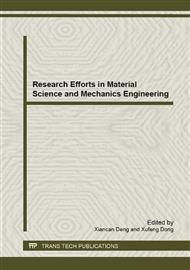p.281
p.286
p.293
p.298
p.304
p.309
p.314
p.319
p.324
The Optimization of Carbon Fiber Drawing Process Based on Cooperative Immune Clonal Selection Algorithm
Abstract:
Drawing is an important process during carbon fiber production. How to obtain the fittest drawing ratios distribute scheme is a typical multi-objective optimization problem. We propose a novel cooperative immune clonal selection algorithm (CICSA) to obtain the optimal linear density and breaking elongation ratio. The CICSA features in synergetic evolution, clonal operation and mutation operation. Compared with the immune algorithm and the genetic algorithm, it has the best performance in precision and convergence time.
Info:
Periodical:
Pages:
304-308
Citation:
Online since:
April 2013
Authors:
Price:
Сopyright:
© 2013 Trans Tech Publications Ltd. All Rights Reserved
Share:
Citation:


